Continuing on from last year’s Fuel Market Review all the signs continue to be positive for the retail forecourt sector in the UK.
There are more vehicles on the UK’s roads, retail fuel volumes have grown, there has been a lot of investment over the past 12 months and the number of dealer sites has increased for a second year in a row.
Over the past year Experian Catalist has visited and re-surveyed some 4,600 sites across the UK and this report is our view of the retail forecourt market.
New car sales are continuing at record levels with 2015 year-to-date up by more than 6% and the total number of vehicles on our roads now at 35.9 million.
You may hear a lot about alternative fuelled vehicles (AFVs) including plug-in electric and hybrid vehicles, but in the context of the total vehicles car parc there were only 52,000 AFVs on the road at the end of 2014 and the number of new electric vehicles in 2014 was all of 14,500.
Reports from the government in the form of the Department of Energy & Climate Change (DECC) and HM Revenue & Customs have indicated increased retail motor fuel volumes in 2014 the headline figure is a +1.1% overall increase in retail fuel volumes compared with 2013.
This masks a continued but slower decline in petrol volumes (down by -1.9%) and a further +4.1% increase in diesel volumes across the forecourt (excluding HGV diesel).
This means, for the first time, that the balance between petrol and diesel on the forecourt has tipped in favour of diesel, which now represents 51% of retail volumes. With the hypermarkets showing a small decline in fuel volumes (-0.5%) in 2014, this means that the balance of the network has increased fuel volumes by +2.3% compared with 2013. This represents an overall increase of 459 million litres or 65,000mlpa per site.
In terms of new investment we recorded 42 new-build sites over the year 23 by the major multiple retailers (down from 35 in the previous year primarily due to a slowdown in their build programmes); 16 new dealer sites; and three new oil company sites (one each for Maxol, Shell and BP).
Of the 16 new dealer sites, 12 were in Northern Ireland. In addition 33 sites re-opened after a period of closure (down from 61 in the previous year).
It has been reported over the past year that an investment of £2m is now required for a new-build site or a major redevelopment to market-leading standards.
Applegreen has opened a new motorway service area on the M2 in Northern Ireland at a reported cost of £6m and Westmorland has just opened the new M5 Gloucester Services southbound to complement the northbound side that opened last year.
Carrying on the trend from the past two years, the number of sites changing from oil company owned to dealer owned was hugely significant we saw 336 sites transfer from company to dealer ownership.
The 220 Murco company sites moved over to BP (87), Jet (55) and Texaco (78) under the Motor Fuel Group. A further 73 Esso sites were acquired by Euro Garages (42) and Rontec (31), and 22 BP sites were acquired by dealers including nine by MRH. On the other hand BP moved ahead strongly with its M&S Simply Food developments and it acquired seven dealer sites during the year. While the hypermarkets’ main store building programme has slowed, there was still plenty of activity, such as Asda buying 15 dealer sites from Rontec, Sainsbury’s acquiring two sites and Morrisons one.
A number of the Co-op societies also moved 16 sites over to Co-op own-branded fuel during the year, and the Co-op Group also sold some sites to Applegreen (Petrogas UK). We recorded that almost 650 dealer sites changed fuel supplier brand over the past year (12% of the dealer network).
A continuing sign that the industry is in a reasonably healthy position is that during the past year we have again recorded a relatively low number of closures a total of 201 closures including 180 dealer sites mainly from the low volume end of the market, but also including a number of sites sold to the hypermarkets for non-fuel use (convenience store developments). These closures were primarily from unbranded (66), Certas Energy (48), Texaco (15) and the rest from various minor brands. In the company owned sector there were 18 closures.
Overall we have seen a net reduction of 126 sites to 8,490 sites with the company network reducing by 321 sites and the dealer network increasing by 124 to 5,465 sites (65% of all sites).
Property market
From a property perspective, forecourt and convenience values are continuing to hold up better than in most other sectors and we have seen an influx of private equity capital which provides a boost to confidence in the sector. Barber Wadlow reported a 6% increase in forecourt property values in 2014, and a total of 875 sites put on the market in 2014.
Compared to high street retail the forecourt sector has performed well, and again we have had no significant financial failures from among the major players across the industry. Indeed the past year has seen the continuing rise of the ’super dealers’ with MRH, Euro Garages, Motor Fuel Group, Petrogas UK and Rontec leading the way and all increasing their site numbers significantly.
Looking forward, Esso is in the process of transferring its remaining 201 company owned sites in central and south eastern UK into the dealer network with Euro Garages (104), MRH (78) and Rontec (19), which is scheduled to complete before the end of 2015.
Similarly Shell put 250 ’third-tier’ company owned sites on the market in 2014 and the majority of these will also transfer before the end of 2015, primarily to Motor Fuel Group (90) and Euro Garages (68).
The result is that the big five ’super dealers’ (MRH, MFG, Euro Garages, Rontec and Co-op Group) will have 20% of the sites (almost 1,600 sites) between them by the end of 2015.
On the other hand, the company owned site network will be reduced in number to about 1,000 sites by the end of 2015 Shell (500), BP (300) and Esso (200 the Esso/Tesco Alliance network). The shift of the former company sites from Esso and Shell into the dealer network usually includes a tie to the brand for a five-year period, and indeed Esso is intending to roll out a forecourt re-imaging programme through the rest of this year; and Shell is continuing to invest in its network.
After a three-year period of relative stability in retail fuel prices on the forecourt, prices have tumbled in the past six months. The chart below shows that prices have had a partial recovery in 2015 but retail prices are still 15-16ppl less than they were a year ago. This is helping the industry get away from having to be focused only on price, and as the media have limited interest, the hypermarkets are shying away from competing heavily on price and generally fuel prices are currently ’off the agenda’.
Market structure
We are now reporting 8,490 open retail sites in the UK with a total retail motor fuel volume of 35.7bn litres and an average fuel volume largely unchanged at just over 4.2mlpa per site, and total shop sales of £4.3bn with a slightly improved average per site of £11,200 per week from an average 69sq metre shop.
There are now 5,465 independent dealer sites in the UK (a net increase of 124 sites compared with the last review) and approaching 40% of these sites are operated by dealer groups with three sites or more. The average dealer site now sells 2.2mlpa and turns over £9,300 per week through a 65sq metre shop.
The hypermarkets have nearly 17% (1,429) of the sites and a 44% share of motor fuel sales and they are the single largest sector by some degree. The dealer sector has again grown in numbers since last year, now with 64% of the sites and with a 2% increase in motor fuel market share to 33.6%. The oil company owned sector now has less than 20% of the sites and its market share has dropped below 23%.
The south-east region continues to dominate the market with almost a quarter of the sites and 30% of the UK’s motor fuel and 34% of forecourt shop sales concentrated there. Northern Ireland has the smallest regional market share in terms of fuel volume (3%), but there has been a lot of activity in the past 12 months with 13 new sites entering the market and the number of open sites has increased by two.
The number of unmanned sites has increased over the past year primarily as a consequence of the Asda programme, which has seen 11 new sites added. The total number of unmanned sites in the UK is now 138; of which 112 are Asda sites and a further 12 are in Northern Ireland.
Costco opened its first site (unmanned) in the UK in Liverpool and Tesco added one unmanned site to its network of six sites with the addition of a development at its Ilkeston store which also has above-ground tanks.
Market shares and brands
As expected, Murco with its former company sites transferring into the dealer network with BP, Jet and Texaco, shows the biggest change over the past 12 months (-220). As a consequence BP is the biggest gainer with +96 sites. Outside of this group Certas Energy (-102) was the biggest loser along with unbranded (-50), but Asda added 28 sites to its network. The unbranded sites have decreased to 678 and they remain most vulnerable to a squeeze on margins and to the pressures on the environmental factors surrounding forecourt operation.
In the dealer sector BP supplies the most sites with 951 (+90), followed by Certas Energy with 917 (-106), and Texaco is in third place with 845 (+43) sites. In terms of motor fuel market share in the dealer sector, BP leads the way with 29%, a 2% increase on last year. Texaco is next with 18.4% then Esso with 15.4% and Certas Energy with 10%.
Esso is continuing to extend its ’branded wholesaler agreement’ and while there are no Greenergy branded forecourts in the UK, the company is currently supplying some 300 dealer sites.
Four new pole sign brands have entered the market over the past year. Breeze is a new brand from Harvest Energy and is designed for their ’virtually attended’ unmanned sites and is on only one site at the moment. Similarly the NOW brand has one site in Cornwall; EVF is a new brand confined to the Isle of Man; and the Local Fuels brand has six sites near the south coast.
Forecourt shops
Overall, the forecourt shop sector has remained at around £4.3bn annual sales in the UK. There are now more than 2,100 sites with convenience stores and they retail 54% of the forecourt shop sales the average convenience store turns over £22,000 per week from a 137sq metre store.
Similarly to last year, in the dealer market shop sales exceed £2.3bn per year (52% of the forecourt shop sales sector). Within the dealer sector 87% of sites now have a shop and 23% of the sites (1,266) now have a full convenience store an increase of 93 sites on the previous year.
In terms of forecourt shop fascias, the Tesco/Tesco Express shop fascia leads the way on 690 sites (+5). This figure includes the Esso/Tesco alliance sites as well as the shops on its own forecourts), and it has almost 17% of the £4.3bn forecourt shop market. Spar is the main symbol fascia and it has increased significantly by 82 sites to be on 715 forecourts and increasing its market share to 12%. Third is the Shell Select/Deli2go fascia, now on 593 (+32) sites, with an 8% market share. At the other end of the scale 480 dealer sites have no forecourt shop at all. We are also recording over 19% of forecourt shops (1,436) have no brand on their shop although this is 105 less than last year. In terms of regional distribution, the South East dominates with 34% of forecourt shop sales, followed by the South West with 10%.
The fuel supply companies are continuing to associate themselves with shop fascia brands and the main shop brands have all announced they are increasing their resources to attract more forecourts in 2015. Harvest is continuing to offer the Spar brand as a pole sign option and Greenergy has a similar offer with the Nisa brand. More recently Jet announced a tie-up with Spar to brand the site with the Jet image on the canopy and Spar on the pole sign.
In summary everything is looking positive for the UK forecourt sector and with all the changes happening this year the position of the independent dealer is better than ever.













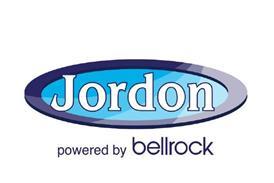
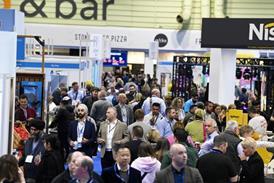

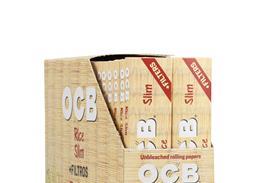
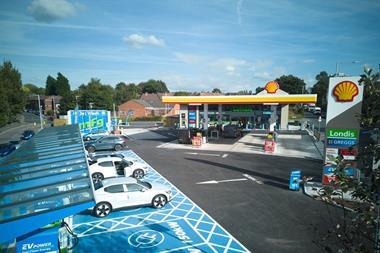




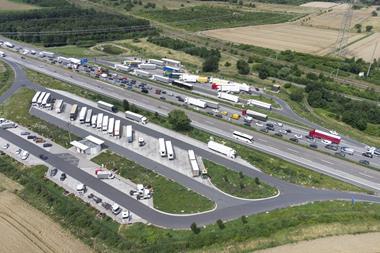




No comments yet